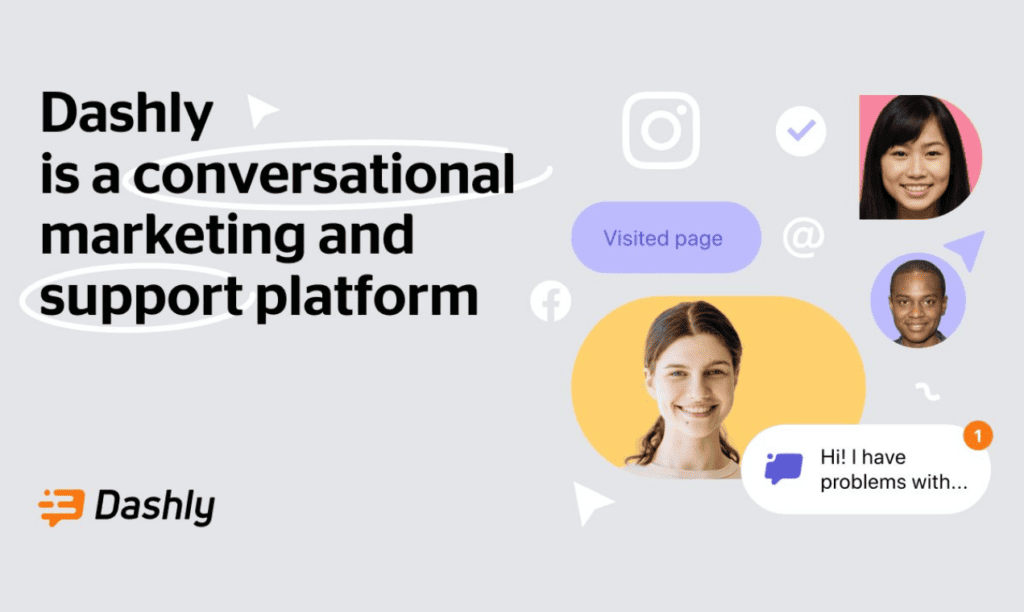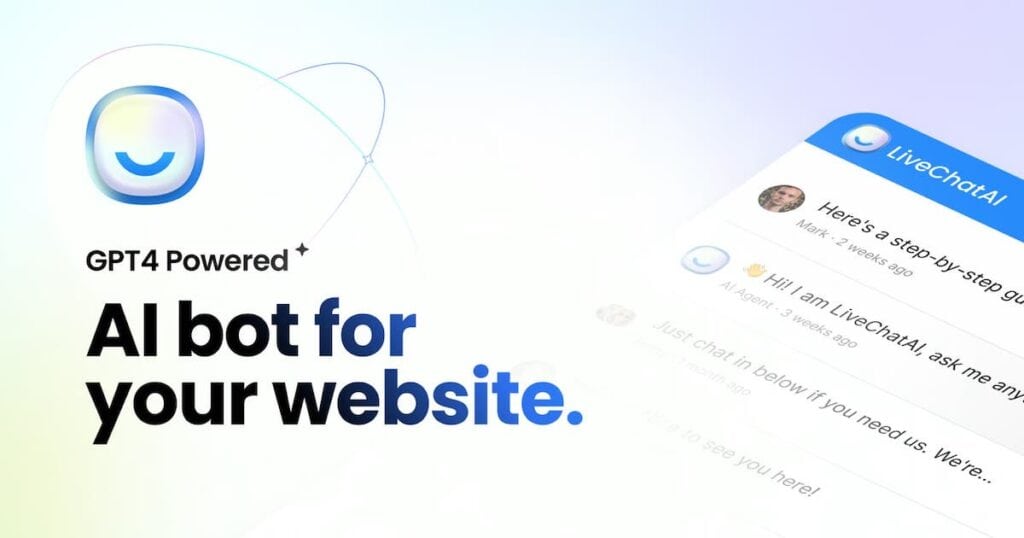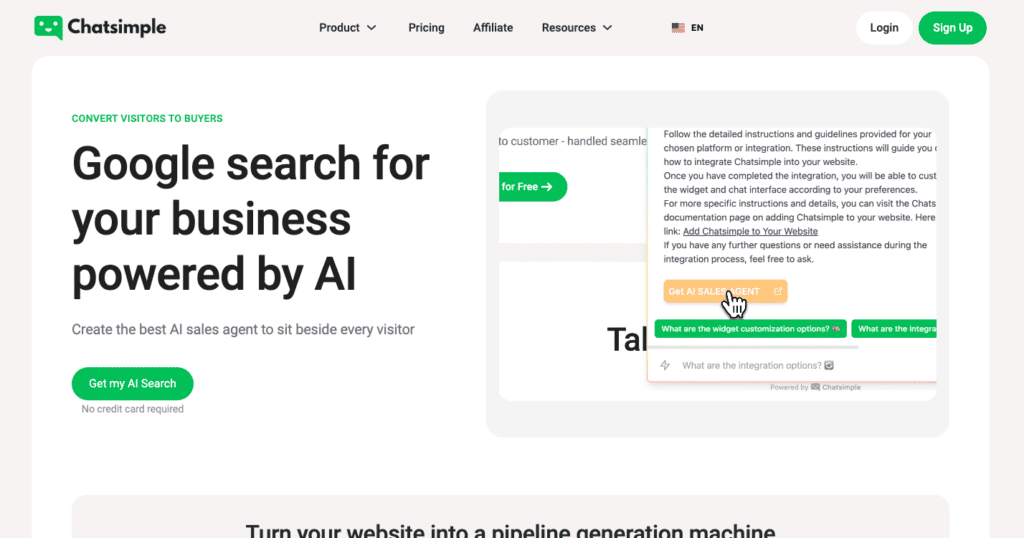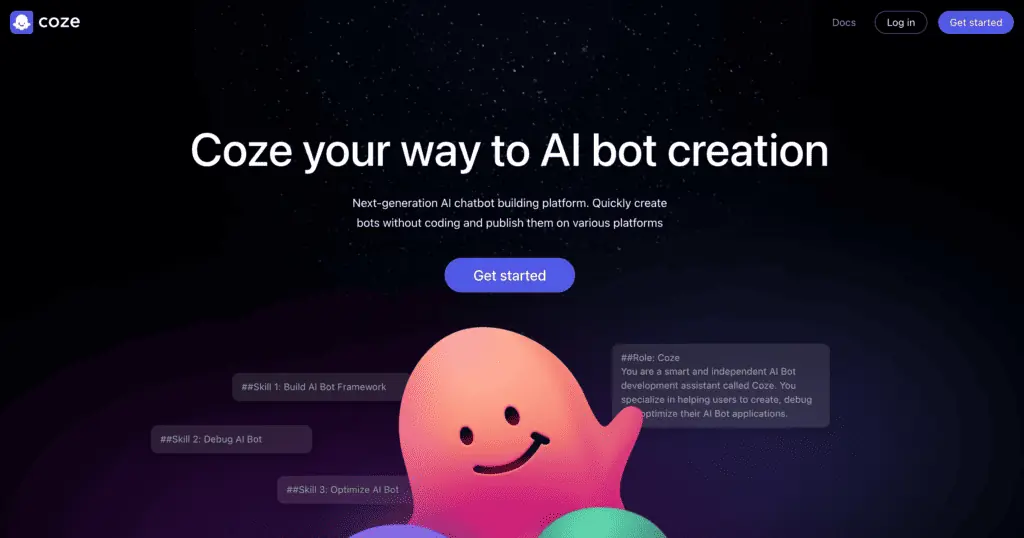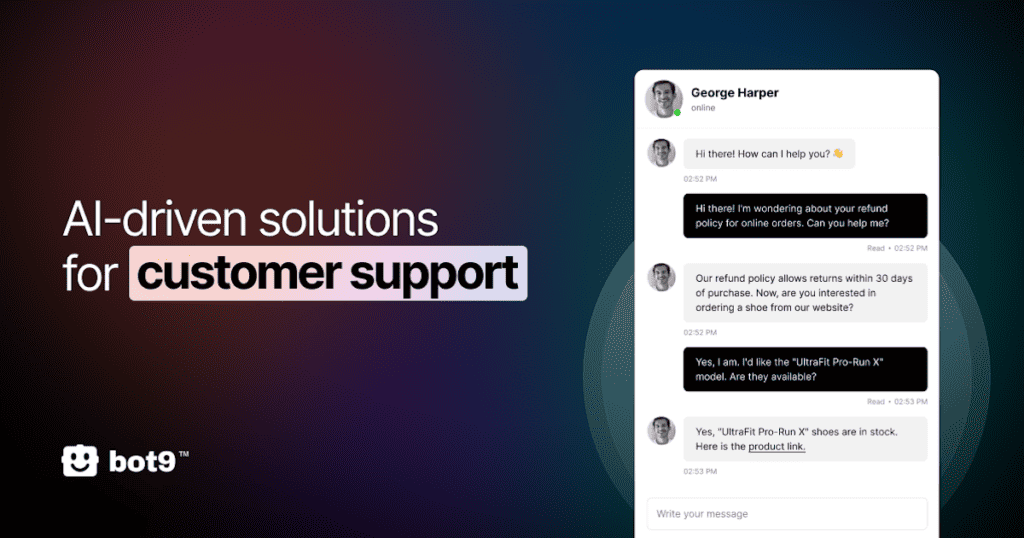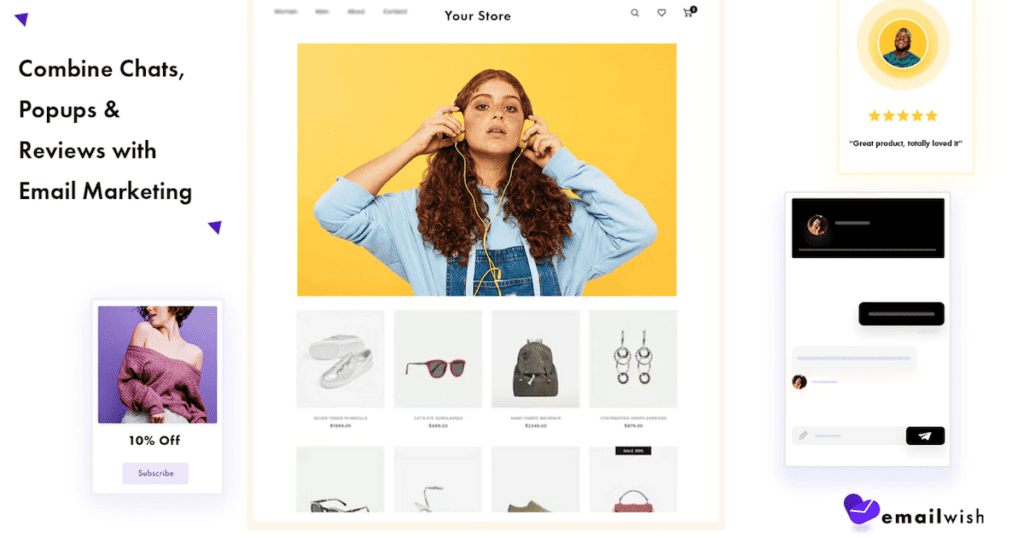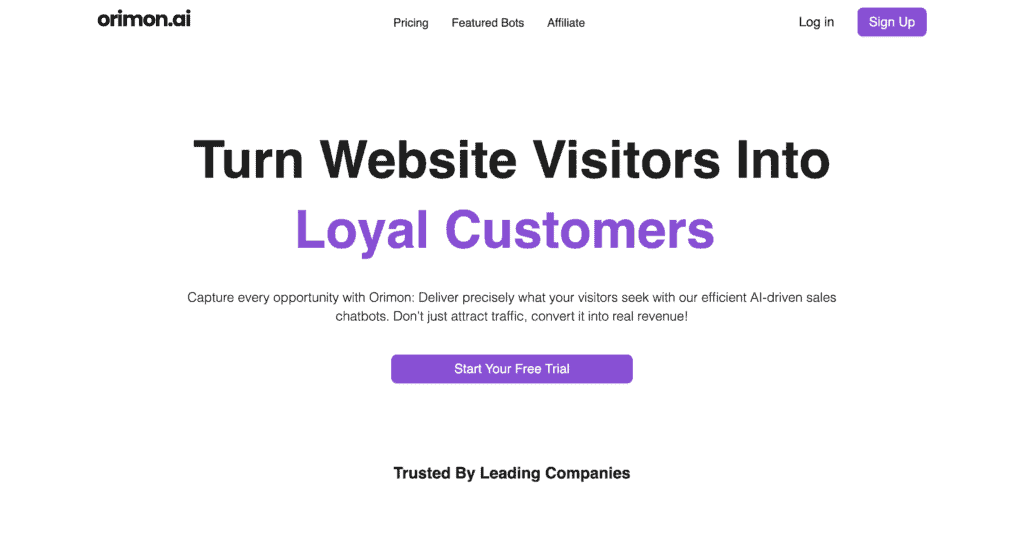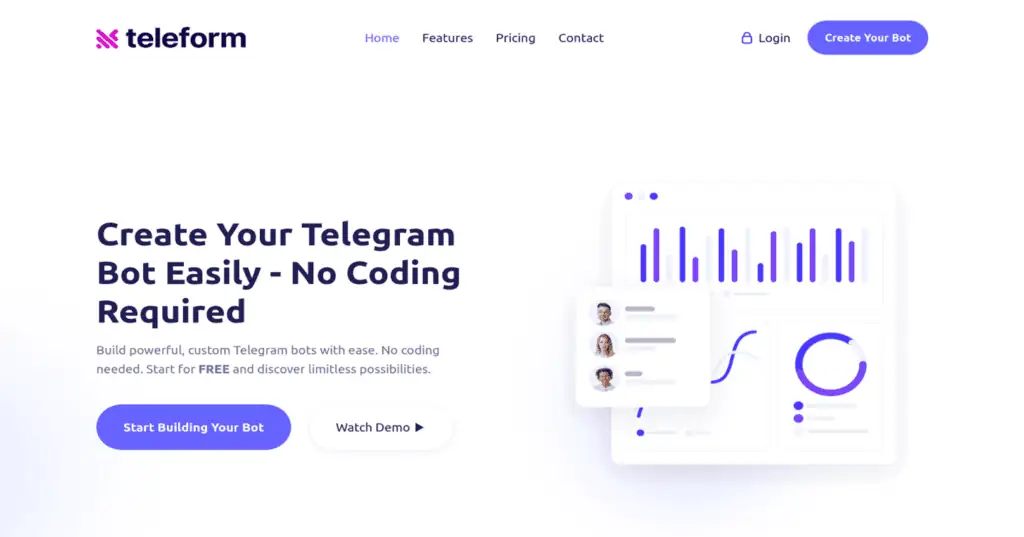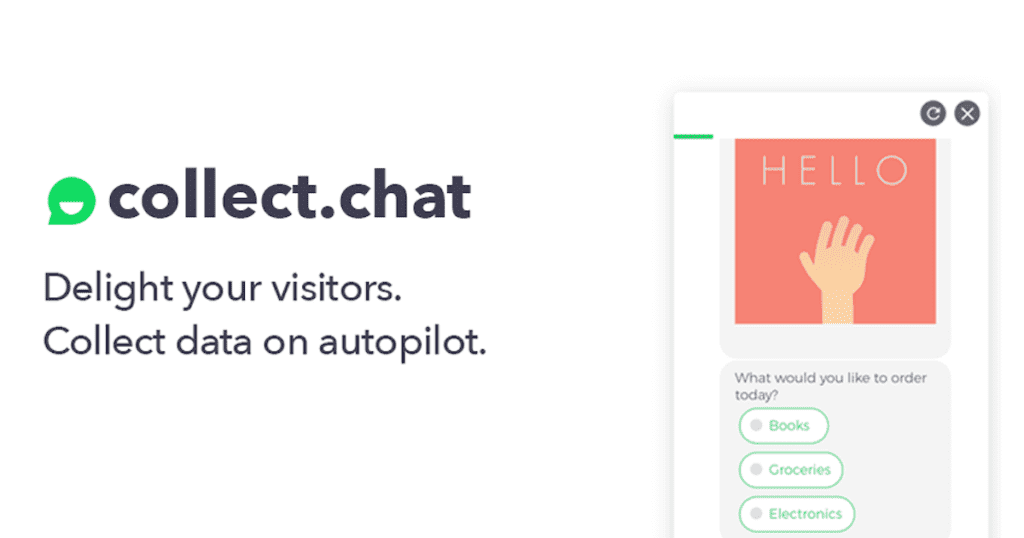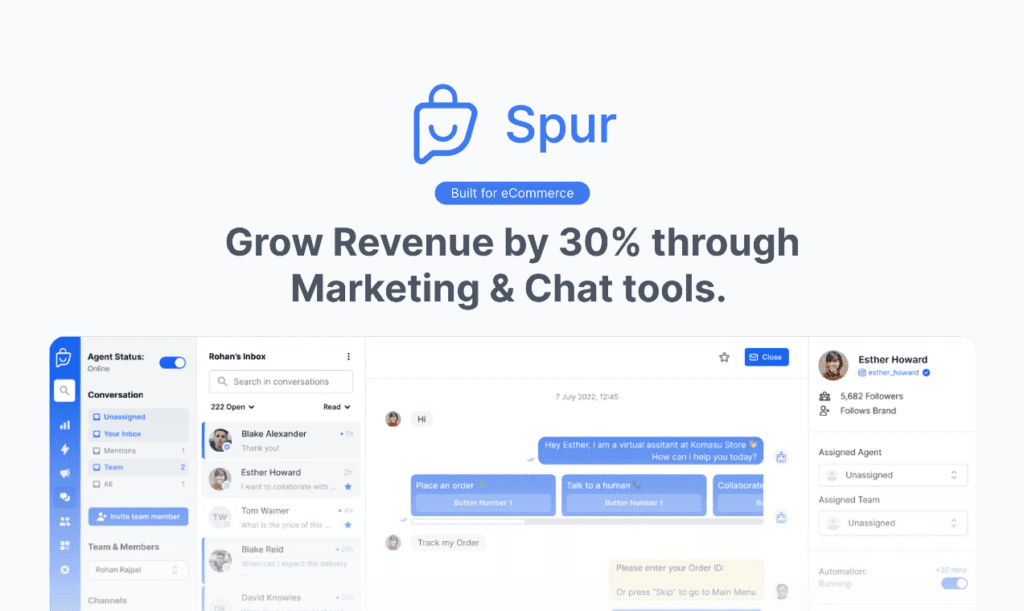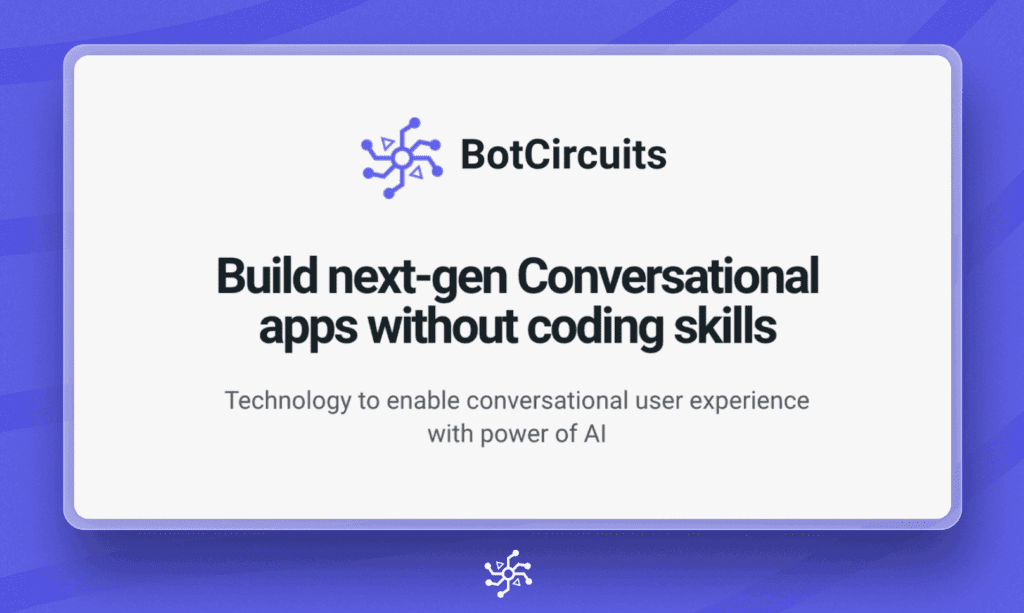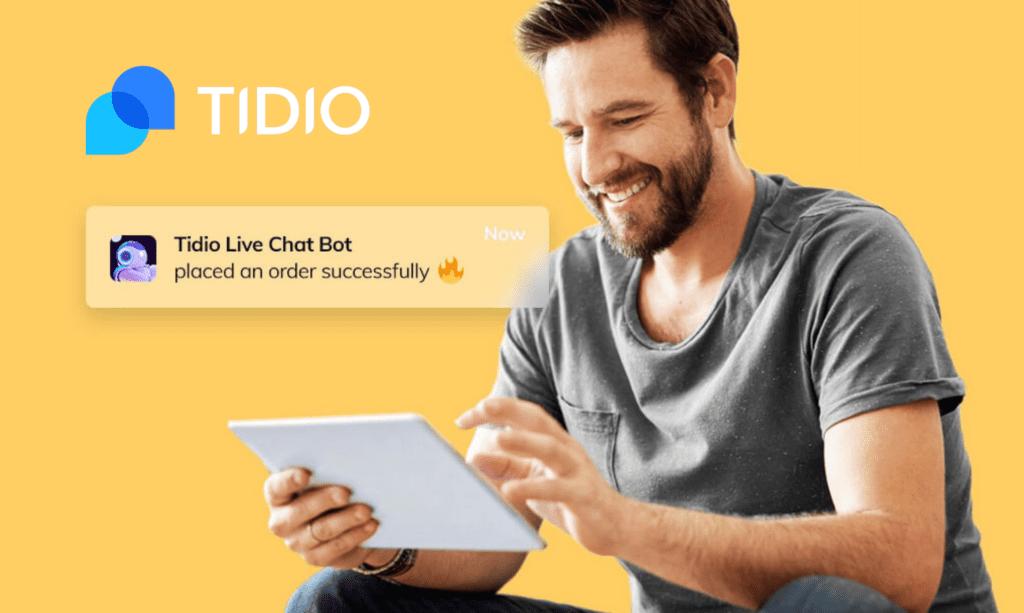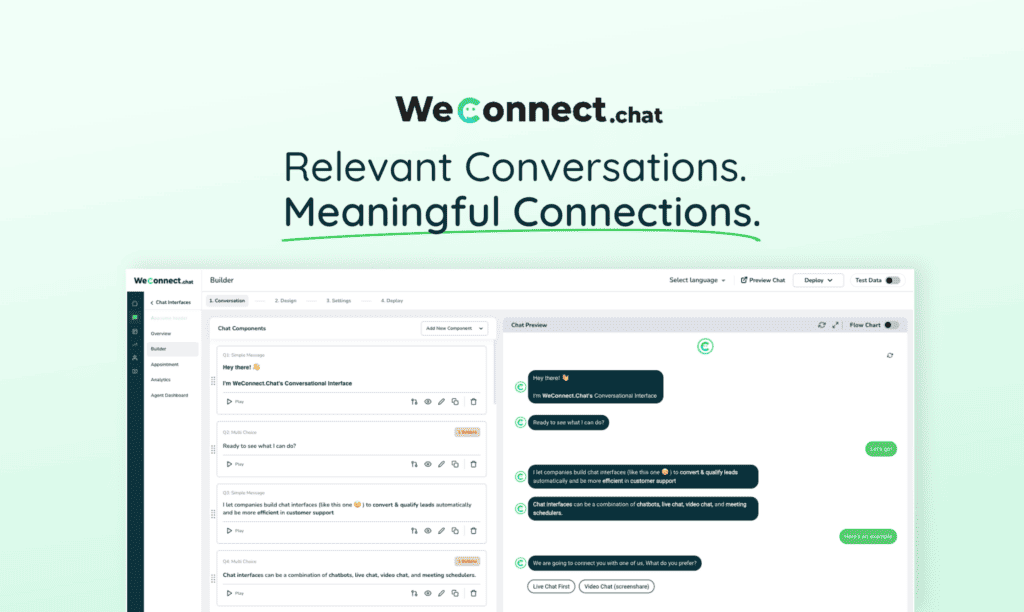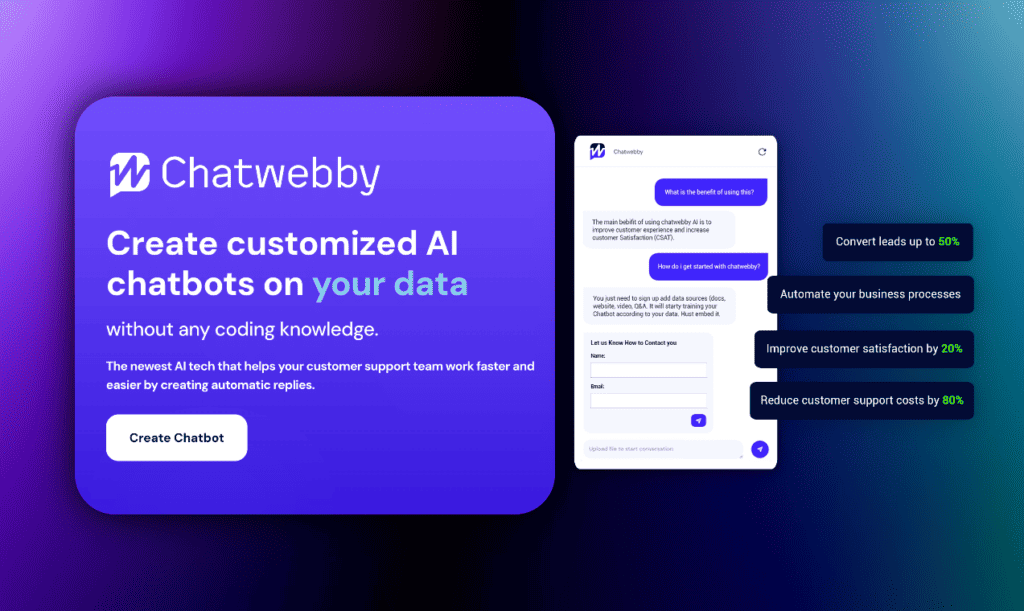ChatMaxima
Read more about ChatMaxima

Chatbot software continues to revolutionize how businesses interact with their customers online. These advanced tools, powered by artificial intelligence (AI) and machine learning, are more than just programs. They are your always-on, always-ready helpers, designed to communicate in a way that feels incredibly human-like. Chatbots can answer questions, provide support, and even handle transactions, making them an indispensable part of modern customer service and business operations.
As technology evolves, so do chatbots. They’ve grown from simple scripted responders to sophisticated chatbot solutions capable of understanding and processing natural language. This leap in technology means they can engage in human-like conversations, learn from interactions, and offer personalized experiences. This guide will explore the vast world of chatbot software, offering insights into its benefits, types, and implementation strategies for businesses looking to stay ahead.
The integration of chatbots into business platforms has streamlined operations and enhanced user experiences. By automating routine tasks, they free up human agents to focus on more complex issues, ensuring that customer inquiries are handled efficiently and effectively. This balance between automation and human intervention highlights the synergy between humans and machines, driving forward the potential for even more innovative future applications.
Whether you’re a seasoned tech professional or a business owner exploring digital solutions, understanding chatbot technology’s current landscape is crucial. This guide aims to equip you with the knowledge to navigate this evolving field, make informed decisions about integrating chatbot solutions into your business, and leverage the full potential of AI-driven customer engagement.
Chatbot software is transforming the way companies engage with their audience, providing a bridge between human-like interactions and the efficiency of automation. By leveraging AI, these digital assistants are redefining customer service, making it more accessible and personalized than ever before. As we dive deeper, you’ll discover the intricacies of chatbot technology and its pivotal role in modern business strategies.
Chatbot software is a sophisticated technology that simulates human conversations, allowing businesses to interact with customers through messaging apps, websites, and social media platforms. At its core, a chatbot solution is designed to automate tasks such as answering frequently asked questions, booking appointments, and guiding users through a website. This automation extends the capabilities of businesses to provide immediate, 24/7 support without constant human intervention.
The power behind chatbot software lies in its ability to conduct human-like conversations. Through the integration of artificial intelligence and business intelligence, chatbots can understand and respond to queries in a way that feels natural and intuitive. This level of interaction was once thought impossible without direct human involvement. Yet, chatbot technology has made it a reality, enhancing the efficiency of customer service and engagement processes.
Since their inception, chatbots have undergone significant transformations. Initially, they were simple, rule-based systems that could only respond to specific commands. However, as we moved into this year, advancements in AI and natural language processing (NLP) have birthed a new generation of chatbots. These modern chatbots are capable of understanding complex queries, learning from interactions, and even mimicking emotional intelligence to some extent.
This evolution reflects the growing demands of consumers for more seamless, efficient, and personalized online experiences. Businesses have responded by adopting chatbot solutions that can provide instant support, gather data, and offer personalized recommendations. As a result, chatbots have become an invaluable asset across various sectors, reshaping how companies interact with their customers and streamlining operations like never before.
In the diverse ecosystem of chatbot technology, two main types stand out: AI chatbots and scripted chatbots. AI chatbots, with their ability to learn and adapt from each interaction, offer dynamic responses to users’ queries, making each conversation unique. Scripted chatbots, on the other hand, operate based on a predefined set of rules and responses. This distinction is crucial for businesses to consider when choosing a chatbot solution, as it directly impacts how users interact with the chatbot and the overall customer experience.
AI chatbots represent the pinnacle of chatbot technology, utilizing advanced algorithms to understand and respond to a wide range of user inputs. They excel in delivering personalized experiences, as they can process natural language, learn from past interactions, and even anticipate user needs. This makes AI chatbots particularly effective in handling complex customer service inquiries and engaging in meaningful dialogues.
Scripted chatbots, while more limited in scope, offer reliability and consistency in customer interactions. They follow a predetermined script, ensuring that responses to common questions are quick and accurate. This can be particularly useful for businesses with straightforward customer service needs or those looking to provide basic information efficiently. The choice between AI and scripted chatbots ultimately depends on the specific needs and goals of a business, with each type offering distinct advantages.
Despite the diversity among chatbot platforms, several common features stand out, shaping the core functionality of these digital assistants. Most chatbots on the market are equipped with the ability to automate tasks, manage multiple conversations simultaneously, and integrate with various messaging channels. This core set of features ensures that businesses can provide consistent and efficient customer service across different platforms.
Additionally, modern chatbots often include elements of emotional intelligence and conversational agents, enabling them to better understand and respond to the emotional state of users. This capability not only enhances the user experience but also allows chatbots to handle sensitive queries with a level of empathy previously limited to human agents. The combination of these features across chatbot platforms highlights the sophistication and versatility of chatbot technology.
Integrating chatbots into your business operations can bring a multitude of benefits, from improved customer service to increased efficiency. By automating routine inquiries, chatbots free up your staff to focus on more complex tasks, enhancing productivity. They also provide instant responses to customer questions, improving the overall customer experience and satisfaction levels. This 24/7 availability ensures that your business can offer support around the clock, a critical factor in today’s fast-paced world.
Beyond customer service, chatbots can gather valuable data on customer preferences and behaviors. This business intelligence is invaluable for tailoring services, products, and marketing strategies to meet the needs of your target audience. By leveraging chatbot technology, businesses can create more personalized and engaging customer interactions, leading to increased loyalty and, ultimately, higher sales and conversions.
When considering the integration of chatbots into your business, several common questions arise. How do chatbots software automate tasks, and what impact does this have on business operations? Can the use of chatbot technology truly enhance customer service and drive sales? These questions highlight the importance of understanding both the capabilities and limitations of chatbots, ensuring that businesses can effectively leverage this technology to achieve their objectives.
Chatbots enhance customer service by providing quick, consistent answers to common questions, reducing wait times, and ensuring that customers feel heard and supported. This immediate response capability is crucial in today’s digital age, where consumers expect fast and efficient service. By handling routine inquiries, chatbots allow human agents to concentrate on more complex issues, ensuring that all customer needs are addressed promptly and effectively.
Furthermore, the ability of chatbots to learn from interactions means that they can offer increasingly personalized experiences over time. This personalized interaction not only improves customer satisfaction but also builds a deeper relationship between the customer and the brand. As chatbots become more integrated into customer service strategies, their role in enhancing the customer experience and fostering loyalty continues to grow.
Yes, chatbots can indeed boost your sales and conversions. By engaging with potential customers the moment they land on your website, chatbots can guide them through your sales funnel. This immediate interaction can answer any questions they have right away, keeping their interest and moving them closer to a purchase. Additionally, chatbots can recommend products based on the customer’s interaction, making the shopping experience personal and increasing the chances of a sale.
Moreover, by collecting data from conversations with visitors, chatbots can help you understand what your customers are looking for. This information allows you to tailor your offerings and marketing strategies to meet customer needs better, leading to higher conversion rates. Chatbots work around the clock, ensuring no potential sale is lost to off-hours, enhancing your sales strategy’s effectiveness.
Natural Language Processing (NLP) is the engine behind the most efficient chatbots. It allows chatbots to understand human language, making interactions with users more natural and effective. By analyzing the way people type or speak, NLP enables chatbots to grasp the intent behind inquiries, even if the questions are not asked in a structured way. This capability ensures that users feel like they are conversing with someone who understands their needs and can provide relevant answers.
Furthermore, NLP allows chatbots to handle multiple languages, making your business accessible to a broader audience. The strengths and weaknesses of NLP technology directly influence a chatbot’s ability to engage with customers effectively. As NLP technology improves, chatbots become more adept at interpreting and responding to a wide range of queries, ensuring that customer interactions are smooth and productive.
The landscape of chatbot software has evolved with AI-powered chatbots leading the charge. These platforms offer advanced features like pre-made workflows, conversation history analysis, and the ability to engage with website visitors through multiple channels. The best chatbot software of this year stands out for its user-friendly interfaces, robust NLP capabilities, and seamless integration with existing business systems, making them indispensable tools for enhancing customer engagement and streamlining operations.
In the realm of chatbot builders, the leaders have emerged by offering the ability to build a chatbot that can communicate effectively across multiple channels. These platforms excel in creating chatbots that generate text responses that are both relevant and contextually accurate. This capability ensures businesses can engage with customers through their preferred channels, providing consistent and helpful interactions that enhance the overall customer experience.
HubSpot Chatbot Builder is celebrated for its exceptionally user-friendly interface, making it effortless for businesses to create and deploy chatbots without needing extensive technical knowledge. The builder’s intuitive design simplifies the process of setting up chatbots that can carry out a wide range of tasks, from answering frequently asked questions to assisting with customer support inquiries. This ease of use does not sacrifice functionality, as HubSpot’s chatbots are equipped to engage with customers effectively, guiding them through sales funnels and providing personalized experiences.
Moreover, HubSpot’s integration capabilities allow these chatbots to seamlessly work with the CRM platform, ensuring that conversation history and customer data are utilized to enhance future interactions. This integration fosters a more coherent and efficient approach to customer relationship management, where every chat is an opportunity to learn more about the customer’s needs and preferences.
Drift stands out in the chatbot arena with its focus on sales engagement. Its AI chatbots are designed to initiate proactive conversations with website visitors, identifying and engaging potential leads with precision. By using these chatbots, businesses can significantly increase their chances of converting casual visitors into paying customers. The AI chatbots are trained to recognize buying signals and can tailor conversations accordingly, providing a personalized buying experience that can drive sales.
Drift’s platform also incorporates advanced analytics, allowing businesses to track the effectiveness of their chatbots in real-time. This data-driven approach enables continuous optimization of chatbot interactions, ensuring they remain an effective tool for engaging customers and driving conversions. The combination of AI-driven engagement and actionable insights makes Drift a powerful ally in any sales strategy.
Intercom has earned its place as the top pick for customization flexibility, catering to businesses that require tailor-made chatbot solutions. With its robust platform, companies can design chatbots that align perfectly with their brand voice and customer engagement strategies. Intercom’s chatbots can handle a variety of tasks, from customer support to lead qualification, and are adaptable to the changing needs of the business.
What sets Intercom apart is its extensive library of customizable templates and its ability to integrate with a wide range of tools and systems. This versatility ensures that businesses can create a seamless experience for their customers, with chatbots that are not only responsive but also deeply integrated into the business’s overall operational flow.
For businesses already leveraging Salesforce, Einstein chatbots represent the ideal integration of AI-powered customer engagement within their existing ecosystem. These chatbots utilize the vast amount of data stored in Salesforce to provide personalized and contextually relevant interactions with customers. By tapping into customer data, Einstein chatbots can anticipate needs, offer timely solutions, and streamline the customer journey across various touchpoints.
The strength of Salesforce Einstein lies in its deep learning capabilities, which allow it to continuously improve its interactions based on customer feedback and behavior. This self-optimizing system ensures that businesses can provide an increasingly efficient and personalized customer experience, leveraging their existing Salesforce infrastructure to its fullest potential.
The pioneers in AI chatbot solutions have set the benchmark for what is possible with advanced natural language processing and machine learning technologies. These platforms offer unparalleled capabilities in understanding and responding to customer inquiries with a level of nuance and accuracy that closely mimics human interaction. Businesses seeking to deploy the most sophisticated conversational agents turn to these innovators for solutions that can transform customer engagement and operational efficiency.
Genesys DX stands at the forefront of chatbot technology, particularly noted for its superior natural language processing capabilities. This platform enables businesses to create chatbots that understand and process human language with remarkable accuracy, allowing for more natural and engaging conversations with users. The ability of Genesys DX chatbots to comprehend complex queries and provide relevant, context-aware responses significantly enhances the customer experience, making it a top choice for businesses prioritizing effective communication.
Moreover, the Genesys DX platform offers comprehensive analytics tools, giving businesses insight into chatbot performance and customer interaction trends. These insights can be used to refine chatbot responses and strategies, ensuring they meet customer needs and drive satisfaction. The combination of advanced NLP technology and actionable analytics makes Genesys DX a leader in the chatbot space.
LivePerson distinguishes itself in the chatbot industry by specializing in omnichannel messaging solutions. Its platform enables businesses to deploy AI chatbots across multiple channels, ensuring a consistent and seamless customer experience whether interacting via web, mobile, or social media. LivePerson’s chatbots are designed to engage with customers effectively, offering personalized assistance and support across the entire customer journey.
What makes LivePerson particularly compelling is its sophisticated AI engine, which powers chatbots capable of understanding and responding to a wide range of customer inquiries in real-time. This capability, coupled with LivePerson’s robust analytics and reporting features, allows businesses to continuously optimize their chatbot strategies for improved engagement and effectiveness. LivePerson’s focus on omnichannel solutions and AI-driven interactions positions it as a leader in delivering comprehensive chatbot services.
Finding the right chatbot platform can feel like searching for a needle in a haystack. Every business has unique needs, and thankfully, there’s a diverse range of chatbots designed to meet these specific requirements. Whether you’re looking to enhance your WordPress site, integrate AI and traditional chatbots, or find a solution that offers the best value for the price, there’s a platform out there for you. This segment dives into the standout features of select chatbot platforms, tailoring to specific needs and ensuring you make an informed decision for your business.
If your website is powered by WordPress, WP-Chatbot is the go-to solution for integrating chatbot functionalities. It’s specially designed to seamlessly blend with WordPress’s interface, ensuring a smooth user experience for both you and your site visitors. With WP-Chatbot, adding a chatbot to your site involves minimal fuss, allowing you to focus on what matters: engaging with your audience and providing them with immediate assistance.
What sets WP-Chatbot apart is its ease of use. Even if you’re not tech-savvy, you can set up and customize your chatbot to align with your brand’s voice and aesthetics. This platform leverages traditional chatbots, ensuring reliable, rule-based interactions that can guide your visitors through your site, answer frequently asked questions, and gather leads without overwhelming your team.
Tidio stands out by offering a powerful combination of AI and traditional chatbots, making it a versatile option for businesses aiming to automate customer service without losing the personal touch. This platform excels in providing users with customizable chatbot templates that cater to various business needs, from capturing leads to offering customer support and boosting sales.
The integration of AI allows Tidio chatbots to learn from interactions, improving their responses over time, while the traditional chatbot elements ensure that predefined workflows guide users effectively. This blend makes Tidio an excellent choice for businesses looking for a chatbot that can handle a wide range of tasks while still providing predictable and reliable service.
Manychat leads the pack when it comes to balancing cost and functionality. It offers a rich set of features at a price point accessible to businesses of all sizes. From simple text-based responses to complex sequences that guide users through a journey, Manychat handles it all with ease. Its intuitive interface makes building and deploying chatbots less of a chore and more of an enjoyable experience.
What makes Manychat stand out is its focus on engagement. With tools designed to enhance interaction, such as broadcasts and quizzes, it goes beyond mere customer service. This platform helps you build a community around your brand, fostering loyalty and driving conversions in a way that feels natural and unforced.
For those new to the chatbot scene, Chatfuel offers the easiest gateway. Its straightforward, no-code platform allows anyone to create a chatbot in minutes, even without prior coding knowledge. Chatfuel’s strength lies in its simplicity, coupled with powerful features such as chatgpt integration, which enables more natural conversations and interactions with users.
Despite its simplicity, Chatfuel doesn’t skimp on functionality. You can build chatbots that engage visitors, qualify leads, and even sell products directly through chat. The chatgpt integration ensures your chatbot can understand and respond to a wide range of queries, making each interaction as helpful as possible. It’s an ideal starting point for businesses looking to explore the benefits of chatbots without a steep learning curve.
Implementing chatbot software has become a game-changer for businesses across the board. These digital assistants work tirelessly, offering customer support, gathering leads, and providing personalized experiences at scale. Understanding the nuts and bolts of chatbot usage and implementation can significantly boost your strategy, ensuring your business leverages chatbot software to its fullest potential.
Chatbots software has revolutionized how industries engage with their audiences. By automating routine tasks, providing round-the-clock customer service, and personalizing interactions, chatbots have become an indispensable tool in sectors ranging from retail to healthcare and education. This versatility demonstrates the adaptability and effectiveness of chatbots in meeting specific industry needs, improving operational efficiency, and enhancing customer satisfaction.
In the retail and e-commerce sector, chatbots have transformed the way businesses interact with customers. These AI-driven assistants provide instant support, helping customers find products, track orders, and resolve issues without delay. This level of immediacy not only boosts customer satisfaction but also drives sales by simplifying the shopping experience and offering personalized recommendations based on user behavior and preferences.
Moreover, by integrating chatbots into their digital strategy, retailers can gather valuable insights into customer preferences and shopping patterns. This data-driven approach enables businesses to tailor their offerings and marketing strategies more effectively, resulting in a more engaging and successful online shopping experience.
The healthcare industry has embraced AI chatbots to provide immediate support and streamline patient care. These digital assistants offer a first point of contact, answering general health queries, scheduling appointments, and even providing medication reminders. By handling routine inquiries, AI chatbots free up healthcare professionals to focus on more critical tasks, enhancing the overall efficiency of medical services.
Moreover, AI chatbots in healthcare are instrumental in patient education, offering accessible information on various health conditions and treatments. This empowers patients to take an active role in their health management, improving outcomes and patient satisfaction.
In the education sector, chatbots are simplifying learning and administrative processes. They assist students by providing instant responses to frequently asked questions, facilitating course registration, and offering personalized learning support. By automating these administrative tasks, institutions can allocate more resources to improving the quality of education and student support services.
Furthermore, AI chatbots can adapt to each student’s learning pace, offering customized resources and feedback. This personalized approach enhances the learning experience, making education more accessible and effective for students of all backgrounds and abilities.
Selecting the right chatbot software is crucial for maximizing its benefits for your business. This process involves understanding your specific needs, evaluating the various options available, and choosing a chatbot platform that aligns with your goals. A strategic approach ensures you leverage chatbot technology to improve customer satisfaction and achieve your business objectives efficiently.
Understanding your business needs and defining clear chatbot goals are the first steps in choosing the right chatbot software. Consider what tasks you want your chatbot to perform, whether it’s customer support, lead generation, or sales. This clarity helps in selecting a chatbot platform equipped with the necessary features to meet your objectives.
Furthermore, evaluating the role of AI chatbots in your strategy is essential. AI chatbots, with their ability to learn and adapt from interactions, can significantly enhance customer engagement and satisfaction. However, they require more resources to implement and maintain. Balancing your needs with the capabilities of AI chatbots ensures you choose a platform that delivers the best results for your business.
When you’re looking to choose the best chatbot software for your business, it’s important to compare the features, pricing, and support options. Each chatbot software has its strengths, whether it’s in natural language processing capabilities, integration with other tools, or user interface design. Start by listing what you need from the chatbot software, like handling customer questions efficiently or integrating smoothly with your sales platform.
Next, evaluate each option based on how well it meets your needs. Look at reviews from other users, test out demos if available, and consider the scalability of the software. Some chatbot software might be great for small businesses but might not scale well for larger operations. It’s also worth considering the future needs of your business to make sure the software can grow with you.
After choosing your chatbot software, the next step is implementing and training it to ensure it meets your business needs. Traditional chatbots require you to set up a list of pre-defined responses based on anticipated customer questions. Start by identifying the most common questions your customers ask and create clear, concise answers for your chatbot. This initial training phase is crucial for traditional chatbots to be effective in handling inquiries.
Over time, you’ll need to review and update the training material based on new questions or changes in your business. Regular monitoring and updating will help your chatbot stay relevant and useful. For AI-based chatbots, continuous learning from interactions improves their ability to understand and respond to customer questions more accurately. Engaging with your chatbot and making adjustments based on feedback is key to leveraging the best results.
The future of chatbots in business looks promising as advancements in AI and machine learning continue to evolve. Chatbots are becoming more sophisticated, able to handle complex interactions and provide personalized experiences. This evolution is making chatbots an indispensable tool for businesses, enhancing customer service, boosting sales, and improving overall efficiency.
As technology advances, we can expect chatbots to become even more integrated into business operations, offering seamless interactions across various platforms. The ongoing development in natural language processing and machine learning will enable chatbots to understand and interpret human emotions better, making interactions more natural and effective.
One of the most exciting trends in chatbot development is the rise of generative AI, which allows chatbots to generate responses in real-time, making conversations more dynamic and less scripted. This advancement will enable chatbots to handle a wider range of customer questions with more accuracy and personality. Another trend is the increasing use of chatbots in voice-activated devices, expanding their use beyond text-based interactions to more natural, conversational interfaces.
Furthermore, we’re seeing a move towards more personalized chatbot experiences. Chatbots are getting better at understanding individual user preferences and history, allowing them to offer more tailored responses and recommendations. This level of personalization not only improves the user experience but also enhances the effectiveness of chatbots in sales and customer support roles.
The advancement of chatbots is heavily reliant on AI and machine learning, with generative AI playing a pivotal role. Generative AI enables chatbots to understand and process customer questions more naturally, allowing for more accurate and contextually relevant responses. This is a significant leap from traditional rule-based chatbots, which can only respond to specific commands or phrases.
Machine learning algorithms allow chatbots to learn from interactions, improving their responses over time. This continuous learning process is key to developing chatbots that can handle complex queries and provide high-quality interactions. As AI technology progresses, we can expect chatbots to become even more intuitive, making them an even more valuable asset for businesses.
Open-source chatbot platforms offer the promise of greater customization and flexibility for developers and businesses. These platforms allow you to build and train your chatbots using the latest technologies without the high costs associated with proprietary software. Expect to see a community-driven approach to improvements and features, with contributions from developers around the world enhancing the capabilities of these platforms.
Moreover, open-source platforms are likely to integrate more easily with a variety of APIs and services, providing businesses with the ability to tailor chatbot functionalities to their specific needs. This flexibility, combined with the cost-effectiveness of open-source software, makes it an attractive option for businesses of all sizes looking to leverage chatbot technology.
While chatbots software offers numerous benefits, businesses face challenges in implementation and optimization. One of the key issues is ensuring the chatbot software seamlessly integrates with existing systems and workflows. It requires careful planning and testing to ensure that the chatbot enhances the customer experience without introducing complications or barriers to interaction.
Another challenge is keeping the chatbot software updated with the latest advancements in AI and machine learning. As customer expectations evolve, so too must the capabilities of chatbot software. Staying ahead of these changes requires a commitment to continuous learning and improvement, ensuring that the chatbot remains a valuable and effective tool for the business.
Integrating AI technology into chatbot service can be complex. It involves not only the technical aspects of AI but also understanding how it fits into the broader context of customer interactions. When implementing AI into chatbots, it’s crucial to ensure that they can operate effectively across different messaging platforms and channels. This ensures a consistent and seamless user experience, regardless of how the customer chooses to communicate.
Moreover, the integration of AI requires ongoing maintenance and training to keep the chatbot service updated with the latest AI advancements. This includes tuning the AI models to better understand and respond to a wide range of customer queries. Successfully navigating these complexities can significantly enhance the effectiveness of a chatbot service, making it an invaluable asset for engaging with customers.
As chatbots become more integrated into business operations, ensuring user privacy and data security is paramount. This means implementing strict data protection measures and ensuring that chatbot interactions comply with privacy laws and regulations. Businesses must be transparent with users about how their data is used and stored, building trust and ensuring a positive user experience.
Additionally, it’s important to regularly review and update security protocols to guard against new vulnerabilities. This includes encrypting data transmissions and conducting regular security audits. By prioritizing user privacy and data security, businesses can protect their customers and their reputation, ensuring the long-term success of their chatbot initiatives.
One of the inherent challenges with chatbots is their current limitation in understanding and interpreting human emotions accurately. This can lead to misunderstandings or unsatisfactory interactions from a user’s perspective. To address this, developers are working on enhancing NLP and sentiment analysis capabilities, aiming to equip chatbots with a better grasp of emotional nuances in text.
Improving chatbots’ emotional intelligence involves training them on a diverse range of datasets that include various emotional expressions. This training helps chatbots to better recognize and respond to the emotional context of user inquiries, leading to more empathetic and effective interactions. As these technologies continue to evolve, we can expect chatbots to become more adept at understanding and responding to human emotions, significantly improving the user experience.
To truly leverage the power of chatbots software, it’s crucial to stay abreast of best practices in design and user experience. This includes ensuring your chatbot is intuitive and easy to navigate, with a clear purpose that aligns with user needs. Additionally, personalizing interactions based on user data can significantly enhance the engagement levels, making each conversation feel unique and valuable.
Another key strategy is to continuously analyze and refine your chatbot’s performance. This means paying attention to how users interact with your bot, identifying common drop-off points, and making necessary adjustments. By adopting an iterative approach to chatbot development and leveraging user feedback, you can ensure your chatbot remains relevant, helpful, and engaging over time.
When designing a chatbot, incorporating 50 AI elements can dramatically improve its understanding and response capabilities. Opting for a paid plan may unlock premium features, such as Zapier chatbots for advanced automation. It’s essential to ensure your chatbot can match your brand’s tone and aesthetic, providing a seamless experience for users. Additionally, integration with Google services can enhance its functionality, making it a more powerful tool for your business.
To maximize user engagement, tailor your chatbot’s design to reflect your brand’s identity. This not only makes interactions more enjoyable but also reinforces brand recognition. Moreover, utilizing easy-to-use chatbot builders with drag-and-drop interfaces allows for quick setup and customization, enabling you to focus on creating meaningful and impactful conversations with your users.
Engaging users with chatbots involves more than just answering questions. It’s about creating a conversational experience that feels personal and responsive. To achieve this, use AI tools to analyze user interactions and tailor responses accordingly. This adaptive approach helps in addressing user needs more accurately, increasing satisfaction and loyalty. Additionally, offering incentives for users to interact with the chatbot, such as discounts or exclusive content, can further boost engagement levels.
Retaining users requires continuous improvement and updating of your chatbot’s capabilities. Integrate advanced AI features that learn from interactions, making your chatbot smarter over time. Also, ensure your chatbot can handle a wide range of queries by regularly updating its knowledge base. This proactive approach not only keeps the chatbot relevant but also encourages users to return, knowing they’ll receive timely and accurate assistance.
Measuring the success of your chatbot starts with setting clear objectives, such as reducing response time, increasing customer satisfaction, or boosting sales. Use advanced reporting tools to track these metrics, analyzing chat history and user feedback to gauge performance. This data not only highlights the strengths and weaknesses of your chatbot but also provides insights into areas for improvement.
Calculating the ROI of your chatbot involves comparing the costs of implementation and maintenance against the benefits it brings, such as saved labor costs, increased sales, or improved customer loyalty. Keep in mind that the true value of a chatbot extends beyond immediate financial gains; it also includes long-term benefits like enhanced customer experience and brand reputation.
The adoption of chatbots software in business is not just a trend but a strategic move towards more efficient, personalized customer engagement. As technology evolves, chatbots are becoming more sophisticated, capable of handling complex interactions with ease. By embracing chatbot software now, businesses can position themselves at the forefront of customer service innovation, staying ahead of competitors and meeting customer expectations.
Looking ahead, the potential for chatbots software in transforming business operations and customer interactions is immense. With continuous advancements in AI and machine learning, chatbots are set to become even more intelligent, offering unprecedented levels of personalization and efficiency. The future of customer service is here, and it’s powered by chatbot technology.
The integration of chatbots software into business operations has significantly transformed how companies interact with their customers. Offering instant, 24/7 assistance, chatbots address customer queries efficiently, freeing up human agents to tackle more complex issues. This shift not only improves operational efficiency but also enhances the overall customer experience, establishing a new standard in customer service.
Furthermore, the use of advanced AI in chatbots enables them to understand and process natural language, making interactions more human-like. This advancement in conversational AI platforms has led to a more intuitive user experience, encouraging more businesses to adopt chatbot technology. The result is a competitive edge in customer engagement, with companies able to provide swift, accurate, and personalized support at scale.
The evolution of chatbots software into sophisticated conversational AI platforms is revolutionizing the customer experience. By automating repetitive tasks and handling a volume of customer queries simultaneously, chatbots allow businesses to focus on content creation and other high-value activities. This shift not only boosts efficiency but also enables a more personalized interaction, as AI tools can analyze data to provide tailored responses.
Moreover, the integration of chatbots with various channels, including mobile apps and social media, ensures that customers can receive support wherever they are, on any device. This seamless chat integration, coupled with the ability to schedule meetings, manage chat history, and offer responsive customer service, elevates the customer experience to new heights. As chatbots become more integrated into customer experience platforms, they are setting the standard for how businesses interact with their customers in the digital age.
Adopting chatbot technology today is a strategic move for any business looking to enhance its customer service and streamline operations. Platforms like Shopify have made it easier to integrate AI conversations into e-commerce, offering a more dynamic shopping experience. With the availability of generous free plans, businesses can start experiencing the benefits of chatbots without a significant upfront investment. Training data and contextual chatbots further improve the user experience by making interactions more relevant and personalized.
Moreover, chatbot apps and automation platforms are not just about handling inquiries; they’re about redefining customer engagement. From automating phone calls to answering a set of questions, chatbots can address a wide range of customer pain points. Tools like Tidio, a chatbot designed for convenience and efficiency, underscore the transformative potential of chatbots in enhancing customer service. The time to build your own AI chatbot and embrace the future of business communication is now.

